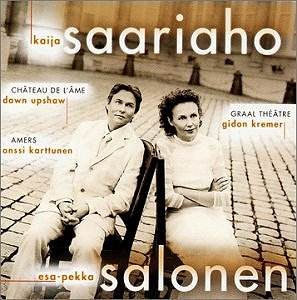 Composer: Various
Composer: Various
Works: Matthew Camidge: Concerto No. 2 in G minor; J.S. Bach: Prelude and Fugue in A minor, BWV 536; Chorale Preludes on ‘Liebster Jesu’, BWV 730 & 731; Guilmant: Sonata No. 3; Ian Milnes: Elegy, Meditation on a Nunc Dimittis in the Dorian Mode; Ronald Frost: Variations on St. Peter; Douglas Steele: Intrada, Chorale Prelude on Cocker’s “Ryburn”, On the Triad; Liszt: Fantasia on BACH
Performers: Ronald Frost (organ)
Recording: Recorded at St. Ann’s, Manchester, 2001
Label: Dunelm Records DRD0170
The latest installment of Dunelm’s exploration of organ repertoire, “Music for Organ: Volume 2,” presents a diverse array of works that traverse the historical landscape of the instrument. Featuring a mix of well-known composers and lesser-known figures, the disc showcases the artistry of Ronald Frost, who not only performs but also offers insightful programming that brings each piece into dialogue with the others. This recording serves as a testament to the organ’s rich lineage and its capacity for both intricate expression and grandiosity.
Ronald Frost’s interpretation of Matthew Camidge’s Concerto No. 2 in G minor establishes a delightful entry point into the disc. The piece, while sounding as if it could belong to the late 18th century, resonates with a certain charm characteristic of early Romantic sensibilities. Frost’s articulation of the Concerto’s lively themes is both clear and buoyant, allowing the listener to appreciate the interplay of voices, particularly in the first movement, where the organ’s registration choices illuminate Camidge’s melodic lines. The work’s familiar motifs are given a fresh vitality under Frost’s hands, a testament to both his technical skill and interpretative insight.
The juxtaposition of J.S. Bach’s Prelude and Fugue in A minor, BWV 536, with its Chorale Preludes on ‘Liebster Jesu’ further enriches the program. Frost navigates the intricate counterpoint of the fugue with precision and a sense of inevitability, rendering the work’s complex architecture accessible yet profound. The registration choices, particularly in the chorale preludes, highlight the organ’s tonal possibilities, drawing attention to Bach’s masterful use of harmonic color. The subtle shifts in registration during the chorales evoke a meditative quality, allowing listeners to engage deeply with the spiritual essence of Bach’s music.
Guilmant’s Sonata No. 3 is another highlight, with Frost capturing the sonata’s dramatic contrasts and lyrical beauty. The balance between the grand, sweeping phrases and more introspective passages showcases Frost’s ability to manipulate the organ’s dynamic range effectively. The technical demands of the work are met with aplomb, particularly in the rapid passages that require both finesse and strength. Frost’s performance stands favorably alongside notable recordings, offering a fresh perspective that emphasizes the sonata’s structural integrity.
Ian Milnes’ Elegy and Meditation on a Nunc Dimittis exhibit a sensitive transcription that works beautifully on the organ. Frost’s approach to these works reveals their choral origins while also allowing the organ’s unique timbral qualities to shine through. The Elegy, in particular, benefits from Frost’s nuanced phrasing, evoking a poignant atmosphere that resonates with the listener long after the final note fades.
The inclusion of Ronald Frost’s own Variations on St. Peter presents a moment of personal expression within the collection. The inventive nature of these variations, coupled with the astringent resolution of the final fugue, underscores Frost’s compositional prowess alongside his performing skills. Douglas Steele’s works, especially the Intrada, enjoy a similar treatment, where Frost’s stylistic nods to Percy Whitlock are both respectful and original, bringing a contemporary flair to the more traditional forms.
Sound quality and engineering are of commendable standard throughout the recording. The acoustics of St. Ann’s Church lend a warmth to the organ’s sound, allowing for a full-bodied resonance that enhances the overall listening experience. Each piece’s distinct character is preserved, with clarity in both the individual lines and the harmonic textures, making it easy for listeners to grasp the intricate interplay of voices.
Dunelm Records has crafted a valuable addition to the organ repertoire with this release. Ronald Frost’s thoughtful interpretations, combined with the diverse selection of works, offer an engaging experience for both seasoned aficionados and curious newcomers. The meticulous care taken in the recording process further enhances this collection, resulting in a disc that not only celebrates the organ’s capabilities but also the artistry of its performers. This volume is undoubtedly worthy of a prominent place in any organ enthusiast’s library.



